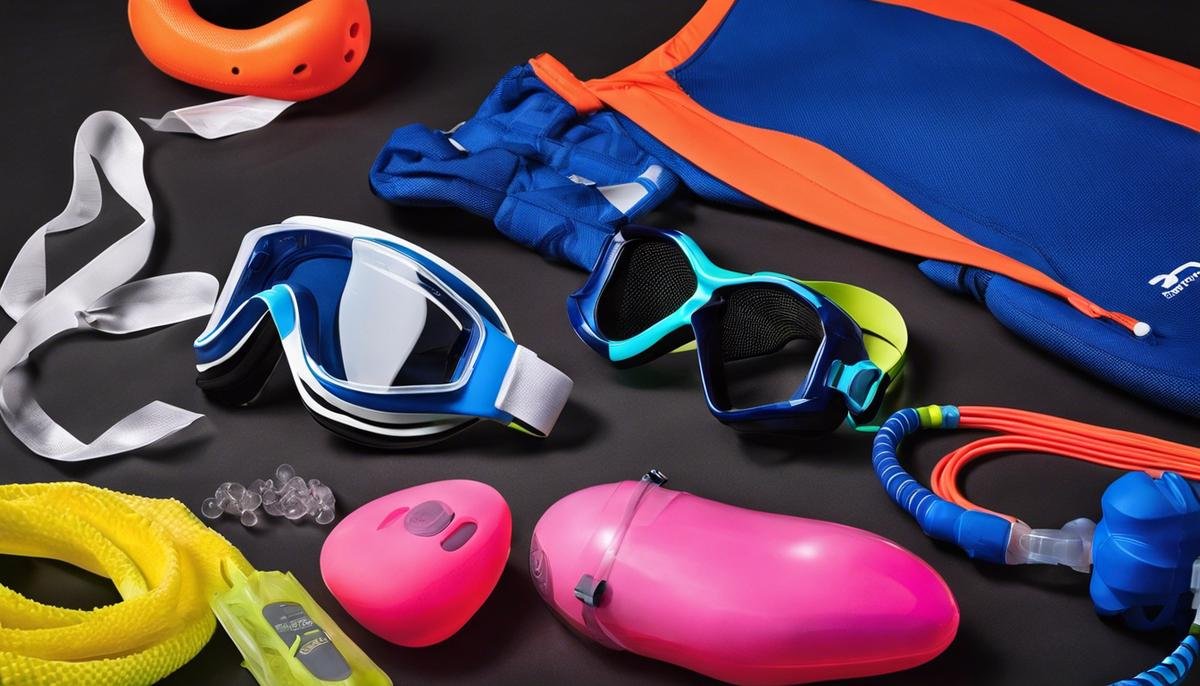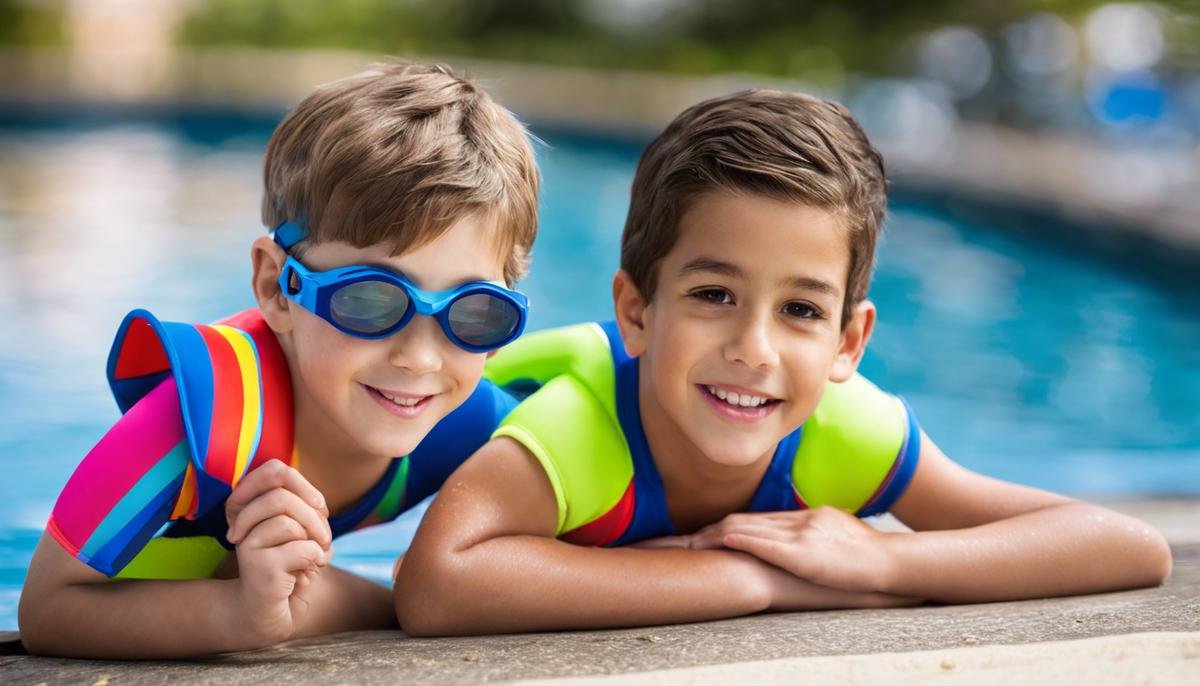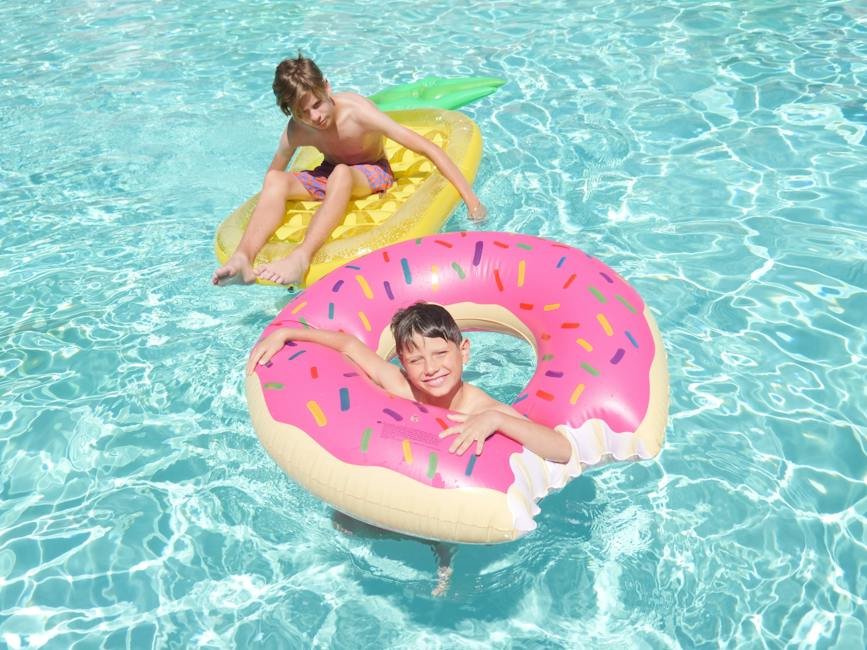
Swimming is a wonderful activity that can provide physical, cognitive, and emotional benefits for all children, including those diagnosed with Autism Spectrum Disorder (ASD). However, the unique sensory sensitivities that children with autism often experience can sometimes make swimming a challenging experience for them. A key part of this solution lies in autism-friendly swim gear. Customized swim gear can help manage these sensory sensitivities, making swimming a more pleasant, engaging, and enriching activity. This paper delves into the intricate nature of autism, especially its sensory sensitivities, and how autism-friendly swim gear is specifically designed to cater to these unique needs.
Understanding Autism Sensitivity
Choosing the Right Swim Gear for Children with Autism: A Guide for Parents
Every parent knows that teaching their children to swim is more than just an essential safety skill – it’s also a wonderful way to stay active, engage with nature, and have fun. For families with children on the autism spectrum, these joyful experiences can be absolutely invaluable. Navigating the world of swim gear, though, can feel like uncharted territory. That’s why understanding which options best suit children with autism can truly make a world of difference.
First and foremost, it’s important to comprehend why certain swim gear is more beneficial for children with autism. Primarily, it comes down to the unique sensory sensitivities that often coincide with this condition. Children with autism may experience heightened sensitivity to touch, sound, and sight, which can make traditional swim gear feel uncomfortable, distracting, or even distressing.
A key piece of swim gear to consider is the swimwear itself. For children with tactile sensitivities, materials that are soft and snug, and designs that minimize uncomfortable seams and tags, provide an invaluable comfort. So, swimsuits made from high-quality, lightweight, and chlorine resistant spandex known for its stretch and durability can be a fantastic choice.
Next, swim goggles often pose a challenge. If you’ve seen your child struggling with wearing them, you’re not alone. Many children with autism find their intense pressure and tightness overwhelming. Opt for goggles designed with softer silicone seals and easily adjustable straps. These will provide the required protection without causing unnecessary distress. Remember that not every child may accept them, and that’s okay. Alternatives like UV protection swim hats or visors can work equally well.
Floatation vests serve a dual purpose for children with autism, offering both safety and therapeutic benefits. They can provide a sense of security and stability in the water and many vests on the market cater specifically to the autism community. Look for designs that offer adjustable buoyancy, enabling your child to gradually build confidence and swimming skills over time.
Lastly, earplugs can be an effective tool for kids who are sensitive to sound or prone to swimmer’s ear. Opt for soft silicone ones which can be molded to fit perfectly inside the ear. Keep in mind that communication may become a bit trickier with earplugs in, so ensure your child is comfortable and understands how to use them properly.
Swimming can be an exciting and therapeutic activity for children with autism, and by understanding their individual needs, especially around sensory sensitivities, it can be made even more enjoyable. With the right swim gear, your child can experience the world of water in a comfortable, safe, and overwhelmingly positive way. Keep in mind that every child is different and what may work for one child may not work for another. Happy swimming, everyone!

Features of Autism-Friendly Swim Gear
Selecting the Perfect Swim Gear for Your Child with Autism: Key Features to Consider
Every child deserves the chance to embrace the joy of swimming, and this includes children with autism. It’s crucial for these unique souls to engage in such forms of play, taking into consideration their distinct sensitivities and needs. While we’ve addressed the importance of instilling swimming skills in these little ones and touched on their sensory sensitivities, there’s another aspect worth discussing – selecting the perfect swim gear for them.
When looking to buy swim gear for your child with autism, it’s pivotal to put more thought into the process compared to shopping for regular swimwear. Of course, fit and comfort are key elements, but there are a few additional aspects to consider that will ensure a smoother, more enjoyable swimming experience.
One of the features to look for is sensory-friendly designs. Since children with autism might have sensory sensitivities, swim gear should feel soft and not irritating to their skin. Look for seam-free and tagless designs, which minimize discomfort and distractions, allowing the child to focus solely on enjoying the water.
Additionally, consider purchasing safety swim gear with bright, contrasting colors. Not only do these vibrant hues appeal to most children, but they can also make it easier for you to spot your child in crowded pools or beaches.
Let’s delve a little deeper into swimwear. Neoprene swimsuits are a wonderful option as they keep the body warmer in the water, reducing the discomfort that sudden changes in temperature might cause. They are also snug fitting, providing a gentle ‘hugged’ feeling which can be calming for children with autism.
Swim caps can be an excellent addition to your child’s swim gear, especially if they are sensitive to water entering their ears. Look for caps made of soft silicone material – they’re gentle on the skin, easy to remove, and highly effective at keeping water out.
Moreover, if your child is a budding swimmer, using water weights can be beneficial. They add a little resistance, enhancing the physical benefits of swimming whilst also providing a more grounding feeling, which can help children with autism to feel more secure in the water.
Incorporating toys and games into swim sessions is another wonderful idea. Seek out those designed for the water such as dive rings or squirty toys – not only can they make swim time more fun, but they can also assist in developing gross motor skills, coordination, and even social interaction.
Lastly, always remember that even with the right swimming gear, it is patience, understanding, and love that truly make the difference. Swim gear is a tool to assist your child in their aquatic journey, but it is your support that will truly help them thrive. Encouraging and nurturing their swimming abilities can be a significant step in their journey towards independence, inclusion, and overall well-being. Happy swimming!

Review of Best Autism-friendly Swim Gear
Just as our little ones with autism have unique needs when it comes to learning and interacting, so does their approach to swimming. Equip them with the proper swim gear, designed specifically for their needs can make the difference between them flourishing in the water or shying away from it.
In addition to the concepts already discussed, like adjustable buoyancy in floatation vests and earplugs for sound sensitivity, there are even more autism-friendly products available on the market. These gear options aren’t merely ‘one size fits all’, but rather they adjust to accommodate the varied individual needs of children with autism.
Have you ever considered neoprene swimsuits? They provide many benefits for children with autism. The soft, flexible, and insulating material of these suits help soothe sensory sensitivities, in addition to providing warmth in colder water environments. It’s like a comforting hug that can help your child feel more secure in the water.
The choice of headgear can also make a significant difference. Soft silicone swim caps can be a game changer for children with autism. Regular caps may tug at hair or feel too tight, but the soft silicone models are gentler, reducing hair-pulling and providing a more comfortable fit for those with sensory issues.
Is your child not ready for full immersion swimming just yet? Water weights can be a fantastic tool. They can be added onto your child’s ankles or wrists for a feeling of added security and stability in the water. These weights come in adjustable weights, allowing for customization based on your child’s comfort and skill level.
While swim gear is important, let’s not forget the role of play in learning. Engage your child’s interest in the water with their favorite pool toys or games. These can act as incentives and make the entire swimming experience more enjoyable and less stressful for them. These can range from simple splash balls to diving toys, all tailored towards encouraging skill development and making the pool an exciting place to be!
Ultimately, the journey to swimming can involve trial and error. It might take some time for you and your young one to figure out what works best. But what matters more than any piece of gear or toy is the attitude you bring to the poolside. Patience, understanding, and a whole lot of love can turn the swimming experience from overwhelming to deeply rewarding and fun.
Whether you’re a parent, caregiver, or a swim coach, your support can help pave the way for many happy splashes and confident little swimmers. So gear up, let them dive in, and watch as they uncover a whole new world of water wonder!

Integrating Swim Gear for Kids with Autism
The process of adapting new swim gear can often seem daunting to a child with autism, but with a little creativity and a lot of patience, parents and caregivers can ensure their child has a positive experience. Here’s how to make the process easier and more enjoyable.
When introducing swim gear to children with autism, consider incorporating storybooks that explain swimming and swim gear, this can help to familiarize them with their new equipment. As many children with autism respond well to repetitive routines, it’s a good idea to continuously read these stories before and during the adaptation process. Additionally, integrating their favorite characters or themes into the mix can make the learning process even more engaging.
For new floatation vests, ease your child into wearing it by first allowing them to explore the vest functions. You can highlight sections that are colorful or contain their favorite animal or character. Sometimes, letting your child wear it during a fun home activity before the swimming session can help them to associate it with positive activities rather than a pressure-filled learning experience.
Swim goggles can be a tricky area. If your child is still battling with their dislike for wearing goggles, you might want to consider transition eyewear. These eye gears are usually more comfortable than goggles, they also block UV light which is beneficial during outdoor swimming sessions. The goal is to find a solution that your child feels comfortable in, to boost their confidence and willingness to participate.
Children on the Autism Spectrum often find change in sensory experiences unsettling, so introducing new gear such as neoprene suits in a safe and comfortable environment is key. Consider turning it into a game, like a dress-up game, that makes the experience enjoyable yet non-threatening.
When it comes to toys, floating games can be a great way for your child to forget their uncertainties and focus on the fun of swimming. You can introduce adjustable water weights during these games, turning the weights into gadgets or superpowers that can guide their swim toys. It’s a convenient way for helping them to register the weights as essential swim aids.
Ultimately, the journey towards embracing new swim gear requires a lot of patience, understanding, and love from those around the child with autism. Every child is unique, with unique needs and preferences. It’s important to allow them the freedom to explore this new environment, and it’s equally important to be there to guide and reassure when uncertainty arises.
The role of swim coaches and caregivers is crucial, of course. An experienced coach understands the best ways to introduce new swim gear to your child, while caregivers offer the constant support and reassurance needed.
Helping a child with autism adapt to new swim gear requires a collaborative effort of love and understanding. While it may be a tricky endeavor, seeing a child succeed and blossom with confidence as they master a new skill is incredibly rewarding. Remember, the ultimate goal is to create a joyous and positive swimming experience that your child can cherish for a lifetime. So dive in, be patient and have fun.

When it comes to children with autism, every stride towards understanding and accommodating their unique needs counts. Using autism-friendly swim gear is one such substantial stride. It promises an opportunity for these children to enjoy a universally loved activity while strengthening their physical capacities, enhancing sensory perception, and instilling a sense of independence and confidence. Carefully selected and integrated gear can ensure swimming evolves from a daunting challenge into a cherished moments of joy, pleasure, and growth for children with autism. Ultimately, embracing autism-friendly swim gear signifies acknowledging and respecting the unique sensory needs of children with autism spectrum disorder, and ensuring that they too can delight in life’s pleasures, just like any other child.




